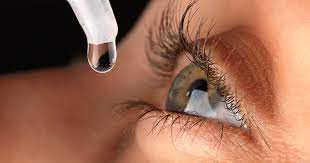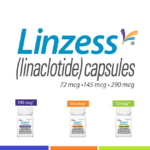Why are Glaucoma Drops Given at Night?

Glaucoma is a disease that damages your eye’s optic nerve. It usually happens when fluid builds up in the front part of your eye. That extra fluid increases the pressure in your eye, damaging the optic nerve. Glaucoma is a leading cause of blindness for people over 60 years old. But blindness from glaucoma can often be prevented with early treatment.
A variety of options are available to treat glaucoma. These include eye drops, laser procedures, and surgery. All are intended to decrease eye pressure and thereby, protect the optic nerve. Currently, in the US, eye drops are often the first choice for treating patients. For many people, a combination of medications and laser treatment can safely control eye pressure for years.
Eye drops used in managing glaucoma decrease eye pressure by helping the eye’s fluid to drain better and/or decreasing the amount of fluid made by the eye. Drugs to treat glaucoma are classified by their active ingredient. These include: prostaglandin analogs, beta blockers, alpha agonists, carbonic anhydrase inhibitors, and rho kinase inhibitors. In addition, combination drugs are available for patients who require more than one type of medication. An older class of medications, the cholinergic agonists (such as pilocarpine) are not commonly used these days due to their side effects.
Types of Glaucoma Eye Drops
Prostaglandin analogs include Xalatan® (latanoprost), Lumigan® (bimatoprost), Travatan Z® (Travoprost), and Zioptan™ (tafluprost), and Vyzulta™ (latanoprostene bunod), and they work by increasing the outflow of fluid from the eye. They have few systemic side effects but are associated with changes to the eye itself, including change in iris color and growth of eyelashes. Depending on the individual, one of these preparations may be more effective and produce fewer side effects. Latanoprost and some formulations of bimatoprost are now available in generic form. Tafluprost is a preservative-free prostaglandin analog.
Beta blockers such as timolol are the second most often used class of medication and work by decreasing production of fluid. They are available in generic form and, therefore, may be less expensive. Timolol is also available in a preservative-free formulation. Systemic side effects of beta blockers can be minimized by closing the eyes following application or using a technique called punctal occlusion that prevents the drug from entering the tear drainage duct and systemic circulation.
Alpha agonists [Alphagan®P (brimonidine), Iopidine®] work to both decrease production of fluid and increase drainage. Alphagan P has a purite preservative that breaks down into natural tear components and may be better tolerated in people who have allergic reactions to preservatives in other eye drops. Alphagan is available in a generic form.
Carbonic anhydrase inhibitors (CAIs) reduce eye pressure by decreasing the production of intraocular fluid. These are available as eye drops [Trusopt® (dorzolamide), Azopt® (brinzolamide)] as well as pills [Diamox (acetazolamide) and Neptazane® (methazolamide)]. Except for brinzolamide, all CAIs are available in generic form.
Rho khinase inhibitors [Rhopressa® (netarsudil)] increase the drainage of intraocular fluid. This new class of glaucoma drug has been available since April 2018.
Combined medications can offer an alternative for patients who need more than one type of medication. In addition to the convenience of using one eyedrop bottle instead of two, there is decreased exposure to preservatives. There may also be a financial advantage, depending on your insurance plan. Cosopt® is a combination of a beta blocker (timolol) and a carbonic anhydrase inhibitor (dorzolamide) and is available in generic form and also as a preservative-free formulation (Cosopt® PF). Combigan® combines an alpha agonist (brimonidine) with a beta blocker (timolol). Simbrinza® is a beta blocker-free combination medication consisting of brinzolamide and brimonidine.
How are glaucoma eye drops used?
It is extremely important to use your glaucoma eye drops exactly as your ophthalmologist tells you to. That includes taking every dose, every day. If you do not do this, you may lose vision.
Also, remember to tell your other doctors which medicines you take for glaucoma. As with any medication, glaucoma eye drops can cause side effects. Your ophthalmologist may have you take more than one of the following glaucoma eyedrop medicines.
How long will I need to use glaucoma eye drops?
As long as the medicine is working, your doctor will probably want you to keep using it every day. If eye drops don’t lower the pressure in your eye enough, your doctor may recommend prescription pills as well — but this is uncommon. Your doctor may also suggest other treatment options, like laser treatment or surgery.
Why take glaucoma drops at night?
Some studies show half of patients stop taking their prescription glaucoma eye drops after a year – leaving them vulnerable to vision loss. Researchers have discovered that a once a night routine – before going to bed – could improve adherence.
In addition, a number of studies have now shown that using certain classes of ocular hypotensive drugs control IOP at night is better than others. Specifically, the prostaglandin analogues seem to be the most effective in flattening the circadian IOP curve. They found that the prostaglandins provided consistent coverage over 24 hours and particularly in the nocturnal period.
How long does it take for glaucoma drops to work?
The eyedrops should help reduce the pressure within 3 to 4 hours. Common side effects include permanent eye colour change, your eyelashes growing longer and thicker, and your eyes becoming more sensitive to light.
Side Effects of Glaucoma Medications
Following are some of the potential side effects of glaucoma medications.
- Prostaglandin Analogs: eye color change, darkening of eyelid skin, eyelash growth, droopy eyelids, sunken eyes, stinging, eye redness, and itching
- Beta Blockers: low blood pressure, reduced pulse rate, fatigue, shortness of breath; rarely: reduced libido, depression.
- Alpha Agonists: burning or stinging, fatigue, headache, drowsiness, dry mouth and nose, relatively higher likelihood of allergic reaction.
- Carbonic Anhydrase Inhibitors: in eye drop form: stinging, burning, eye discomfort; in pill form: tingling hands and feet, fatigue, stomach upset, memory problems, frequent urination.
- Rho Kinase Inhibitors: eye redness, corneal deposits, stinging, and small bleeds on the white of the eye.
Side effects of combined medications may include any of the side effects of the drug types they contain.





